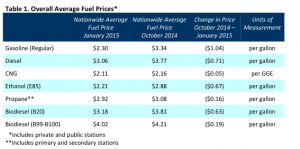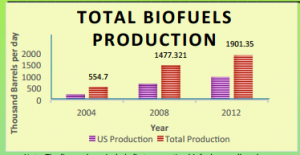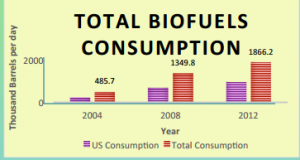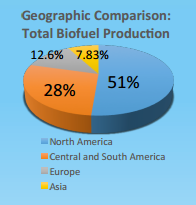What are Biofuels?
Biofuels are fuels extracted, either indirectly or directly, from organic matter. There is wide variety and abundance of organic matter that can be utilized to create fuel (i.e. Liquid Biofuels for Transport Prospects). Biofuels are classified by their differing feedstocks of organic matter for the purpose of extraction. This website breaks down the distinguished generations of biofuels and analyzes how each particular one works. In addition, the following topics are analyzed: costs and benefits, feasibility, and perhaps most significantly effects on pressing topics such as environmental injustice and global warming.
Types of Biofuels
- First Generation: extracts from sugars, starches,
oil, and animal fats that are converted to fuels
using chemical processes - Second Generation: non-foods, including agricultural waste,
lingocellulosic biomass, and so forth - Third Generation: Quick-Growing Biomass
(e.g. algae) - Fourth Generation: Engineered biomass or plant matter
to obtain properties like higher energy density,
and ideal growing characteristics (What are Biofuels)
Overall U.S. Domestic Fuel Prices as of Jan 2015:

International Scope of Biofuels:
Biofuels are not limited to the United States, but rather they play a role throughout the entirety of the international system. Figures 2 and 3 below showcase precisely how the biofuel industry is steadily increasing in the U.S. as well as internationally when considering both production and consumption.


Figure 5 illustrates a more specific breakdown of biofuel production by region. As displayed below, the U.S. is a big factor in biofuel production and needs to continue its push to renewable biofuels. Further, the majority of biofuel production takes place within the Americas.

(Composed by Eli Karp, Tien Tran, edited by Robert King)
References:
What are Biofuels? (n.d.). Retrieved April 20, 2015, from http://www.greenchoices.cornell.edu/energy/biofuels/
Liquid Biofuels for Transport Prospects, risks and opportunities. (n.d.). Retrieved May 4, 2015, from http://www.greenfacts.org/en/biofuels/l-2/1-definition.htm
What are Biofuels. (2010, January 1). Retrieved April 17, 2015, from http://biofuel.org.uk/
“Total Biofuels Production and Consumption.” International Energy Statistics– EIA. N.p., n.d. Web. 16 Apr. 2015.
